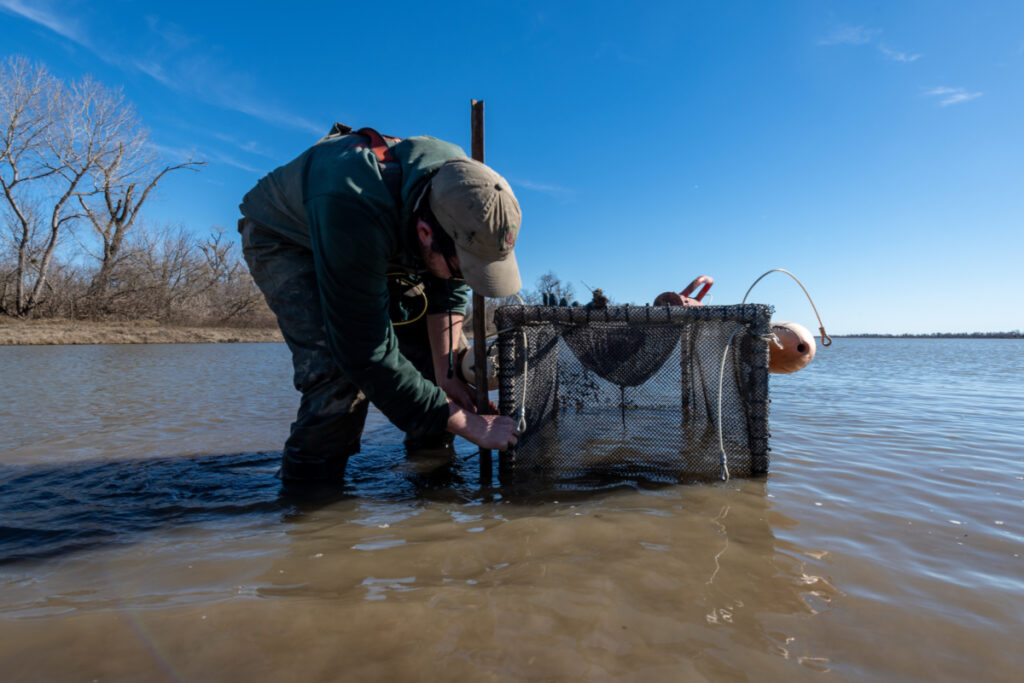Salmon, Rice, Water & Science
After years of running our California Ricelands Salmon Project during drought conditions, I am thrilled to report that this season’s fieldwork is now firing on all cylinders after a series of atmospheric river storms brought bypass flooding – and dozens of wild salmon – to our pilot project field in the Sutter Bypass. It is truly a welcomed sight for me and the UC Davis team of scientists who are working so diligently on this innovative project. We are currently in Phase II of our Salmon Project after a second $1.2 million agreement with the USDA’s Natural Resources Conservation Service (NRCS) was finalized along with critical matching funds provided by our generous group of sponsors led by Syngenta and State Water Contractors.

The California Rice Commission (CRC) is leading this multi-year effort to conduct the necessary science and field testing to strategically manage rice fields located within flood bypass areas to provide optimal habitat benefits to the four runs of Chinook Salmon that are dependent upon the Sacramento Valley watershed. We are specifically targeting the natural‐origin or “wild” salmon that volitionally access the rice fields when the Sacramento River spills into the floodplain through weir operations. We have a particular interest in helping Spring run and Winter run salmon, which are listed as threatened and endangered species, respectively. The bulk of the scientific fieldwork is being conducted by the UC Davis Center for Watershed Sciences in consultation with California Trout.

The CRC has worked to get the necessary state and federal agreements in place that allow us to study the listed species that have remained in the project field after the floodwaters receded. To date, we have counted about 90 natural-origin salmon in the rice field thus far. Based on salmon size-class assessment, we have counted mostly Fall run (about 75), 1 late-Fall run, 8 Winter run and 3 Spring run during seining and fyke net monitoring operations. Other fishes observed include splittail, shad, golden shiner, Sacramento sucker, hatchery steelhead, bass, sunfish and pike minnow. Our permits allow us to hold all fish in a specialized net system below the drain box for 24 hours, allowing researchers to be count, speciate and measure each individual fish. All natural-origin salmon are also genetically-tested for final confirmation of the types of salmon we are finding in the field.

The ultimate goal, should this pilot practice prove beneficial to salmon populations, is to work with NRCS and our salmon conservation partners to develop a practice standard for rice growers in the bypasses to implement year-over-year to help salmon thrive. There is a lot of activity by researchers and daily science being discovered in the field. The best way to learn more and stay involved is to visit Salmon.CalRice.org. The Contact Us tab offers visitors the option to sign up for future project updates.





